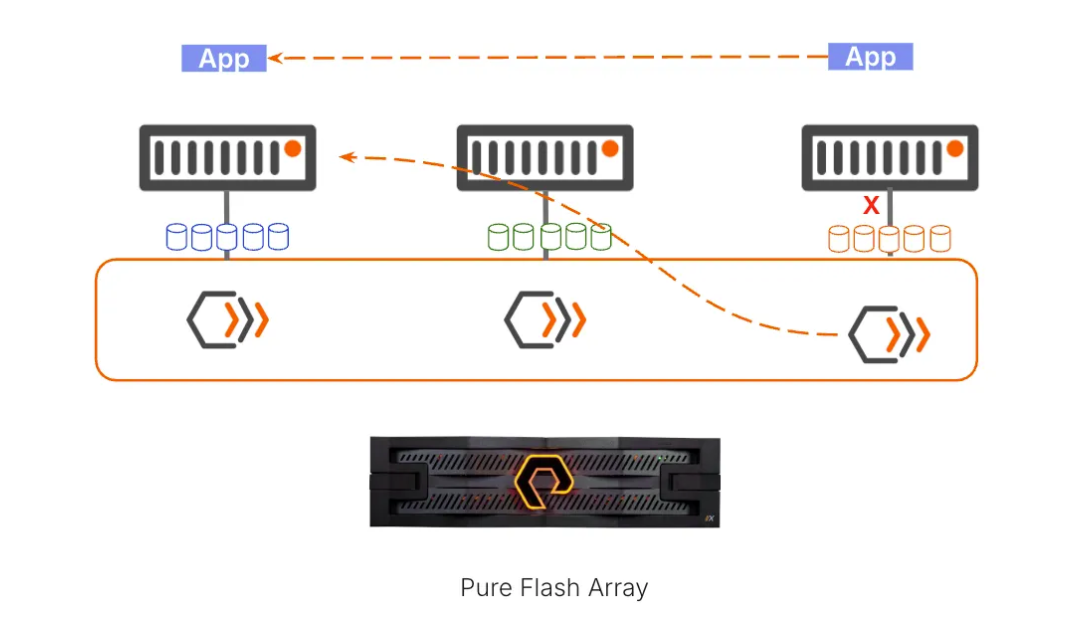Pure Storage has introduced Portworx Kube Datastore, a VM architecture designed for cloud-native environments that aligns with how VMware administrators already operate. Built for KubeVirt, Kube Datastore offers enterprises a practical path to modernization without compromising uptime, workflows, or data protection. The result is a consistent, software-defined data platform that enables organizations to run everything from lightweight edge VMs to heavy VDI on Kubernetes, while enhancing cyber resilience and reducing rising virtualization costs.

Modernization Without Disruption
CIOs broadly recognize that Kubernetes is becoming the default platform for new applications and AI workloads; however, moving critical VMs has appeared to be risky, complex, and expensive. At the same time, board-level scrutiny of data security and ransomware resilience has never been higher. Portworx Kube Datastore addresses these concerns by providing a VM experience on Kubernetes that preserves operational continuity for VMware teams, minimizing the learning curve and the risk typically associated with platform transitions.
Built on KubeVirt, Designed for Operators
KubeVirt has become the largest virtualization project in the cloud-native ecosystem, with contributions from prominent companies such as Red Hat, SUSE, Microsoft, and Oracle, among others. Portworx Kube Datastore builds on this platform to modernize VM operations for Kubernetes while maintaining familiar semantics for virtualization teams.

Intelligent Storage Abstraction
Kube Datastore rethinks how VMs access storage on Kubernetes. It offers a unified, high-performance data layer across the cluster, enabling workflows that operators expect from mature virtualization stacks, such as fast provisioning, live migrations, vMotion-like capabilities, snapshots, and rapid recovery delivered with cloud-scale efficiency and flexibility. This abstraction is key to running both stateful and latency-sensitive VM workloads alongside containers without creating storage silos or operational friction.
Operational Continuity for VMware Teams
Enterprises depend on well-established automation and runbooks that have been refined over many years. Kube Datastore maintains this discipline with dependable workflows such as Advanced Storage Migration and Enhanced Storage Rebalancing. In practice, teams can move, balance, and optimize storage-backed VMs on Kubernetes with the same predictability they are accustomed to, minimizing the risks associated with day-2 operations.
Flexible Deployment Across Edge, VDI, and Nested Control Planes
Organizations can run VMs across diverse environments—from compact edge locations to performance-hungry Citrix VDI estates—without depending on VMware as the hypervisor. Support for nested control planes, including OpenShift-on-OpenShift, broadens the set of viable architectures and unlocks consistency for multi-cluster and multi-site operations.

Smooth Migration from VMware with FlashArray Acceleration
Transitioning from VMware to Kubernetes does not need to jeopardize uptime or DR postures. For customers using Pure Storage FlashArray, Rapid VM Migration can materially reduce migration windows, helping teams move at program speed while meeting SLOs. The combined platform approach limits retooling and accelerates time-to-value.
Data Resilience: BCDR for VM Workloads on Kubernetes
As cloud outages and ransomware campaigns escalate, enterprises need a uniform, auditable BCDR that spans both VMs and containers.
Granular, SLA-driven Recovery
PX-Backup introduces VM file-level backup and restores, enabling teams to tailor recovery to user needs and application SLAs. This granularity helps reduce mean time to recovery (MTTR), avoid unnecessary full-image restores, and align protection strategies with data criticality.
Metro DR with Zero RPO for Critical Workloads
By adding support for FlashArray ActiveCluster, Portworx extends synchronous disaster recovery to Kubernetes-hosted VMs, enabling a zero RPO for designated workloads. This capability reduces the blast radius of site failures and supports stringent regulatory or business-continuity mandates without requiring bespoke tooling.
Collectively, these features help organizations reduce outages, strengthen cyber resilience, speed recovery, and minimize downtime—while preserving a consistent operating model across sites and clusters.
Managing Cost Curves
Virtualization costs are trending upward. While some organizations may delay decisions, the strategic move is to consolidate and modernize with an eye toward operational efficiency.
Portworx for KubeVirt enables VMs and containers to run side by side on Kubernetes, utilizing familiar VMware-like workflows. This approach helps reduce overprovisioning by improving density and resource utilization, decreasing platform sprawl, and centralizing automation. CIOs gain a sustainable path to lower TCO while enhancing agility and security.
Enablement and Scale: Partnering for Adoption
To accelerate transformation and reduce skills risk, Portworx is partnering with global systems integrators such as Wipro. These partnerships support upskilling, reference architectures, and repeatable patterns that shorten the path from pilot to production—especially in multi-site and regulated environments.
Portworx Kube Datastore provides enterprises with a reliable and low-friction way to modernize VM workloads on Kubernetes. It combines familiar virtualization processes with cloud-native scaling, integrated data protection, and flexible deployment options. For teams managing modernization alongside uptime, security, and cost controls, it is a practical choice that aligns with current operator workflows while preparing the platform for the demands of the AI era.




 Amazon
Amazon